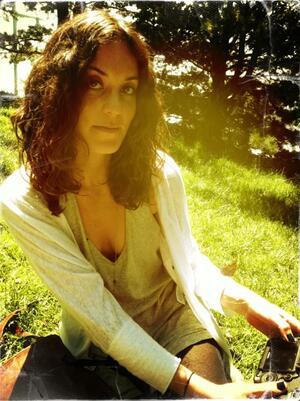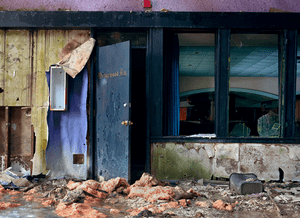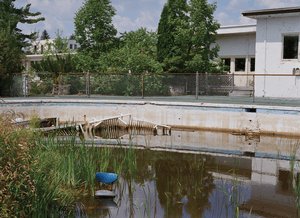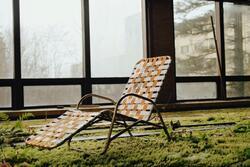An Interview with Photographer Marisa Scheinfeld: Part II
This year, photographer and Catskills native Marisa Scheinfeld mounted her first museum exhibit, “Echoes of the Borscht Belt.” We spoke to Marisa about her haunting photographs, what drew her to the ruins of the famed Jewish play land, and why the Catskills are so important to Jewish American culture. Don’t miss Part I of JWA’s interview with Marisa!
What drew you to photograph these resorts—or rather, what is left of them?
I began this project in graduate school, during a time when I was quite confused about what kind of work I wanted to do. I received some poignant advice – to photograph what I know. I knew my hometown region had a vibrant past, and that it had truly slipped away. Driving through the landscape of the county today, it’s unavoidable to see a ruin or remnant of what was once a grand resort industry. I was aware that the Borscht Belt had been widely documented in memoirs, narrative histories, and archival
photographic anthologies. Yet I didn’t know of a visual record of its built and natural environment in the early 21st century. I began to make seasonal trips home to New York and started out by just driving around. I drove to hotels and colonies I had never been to before, and others that I recalled visiting as a child. I think of this project as something historical and personal, an elegy of sorts that dwells at the intersection of Jewish culture, landscape and time.
As a photographer, how much of your work is about creating art, and how much is it about documenting history?
It's a bit of both. Photography has evolved into a mechanism for understanding and increasing knowledge of the world. It can inform, alert, and at times, shock. Above all, the photograph is widely held to be a record, a piece of evidence that something happened at some time, somewhere. For me, the Borscht Belt began to reveal itself in unexpected ways as I photographed its ruins, and often I encountered things I wouldn’t have looked for or anticipated. I consider myself an archeologist of sorts, searching for remnants and relics of an era, equipped with my tool (my camera) and my eyes.
Can you explain the significance of ruins to you as a photographer—and to our society?
The very act of making a photograph involves creating a record of something that has, in the passage of time, either altered or no longer exists. The ruin has long been a fascination for photographers – even from the earliest days of the medium’s invention.
These sites no longer serve their intended purpose, but they suggest a sense of animation in their untamed and reclaimed form. Though their original colors may have faded along with their intended use, I found transformed figures, shades, and textures that signaled a new sense of vigor, and were utterly alive.
The ruin can conjure up myriad feelings, questions, emotions, and thoughts. It has elements of both light and dark, which we as humans also contain. I think that fascination lies largely within the basic wow factor that a ruin can evoke. But also, deeper notions about tragedy, loss, absence, growth, what lie before us, what lay ahead – a contemplation of sorts – that often keeps us spinning, with no definitive answer.
Today, many people associate the Catskills with the setting of Dirty Dancing. Based on what you’ve learned about the Borscht Belt’s heyday, do you think the movie does it justice?
Dirty Dancing encapsulates a story of what it was like – but not solely what it was like because it was so much more than that. No two-hour movie can do justice to what this epic era was – the people who worked, visited, performed there, the culture and humor, the food, and even the social aspects. The film can, however, provide a foundation. For example, when I tell people about my work – and they are unfamiliar with the region – I will bring up Dirty Dancing but quickly state that what I am doing is documenting the aftermath of it. At that moment, they typically get it.
More details:
Marisa Scheinfeld’s exhibition of photos of the Catskills is now on view at the Yiddish Book Center in Amherst, MA (www.yiddishbooks.org) until. In January 2016, it will travel to Chicago and then to other possible cities across the U.S.
In 2016 Cornell University Press will publish a book of this photographic series that contains images from about 30 hotels and bungalow colonies sites such as The Concord, Grossinger’s, The Brown’s, Kutsher’s, The Pines, Laurel’s, Echo Mountain Bungalow Colony, Breezy Corners Bungalow Colony, and more. The book will contain roughly 100 photographs, ephemera from the era, and will include writings from Jewish American historian Jenna Weissman Joselit and writer Stefan Kanfer.
For more information, visit www.marisascheinfeld.com








